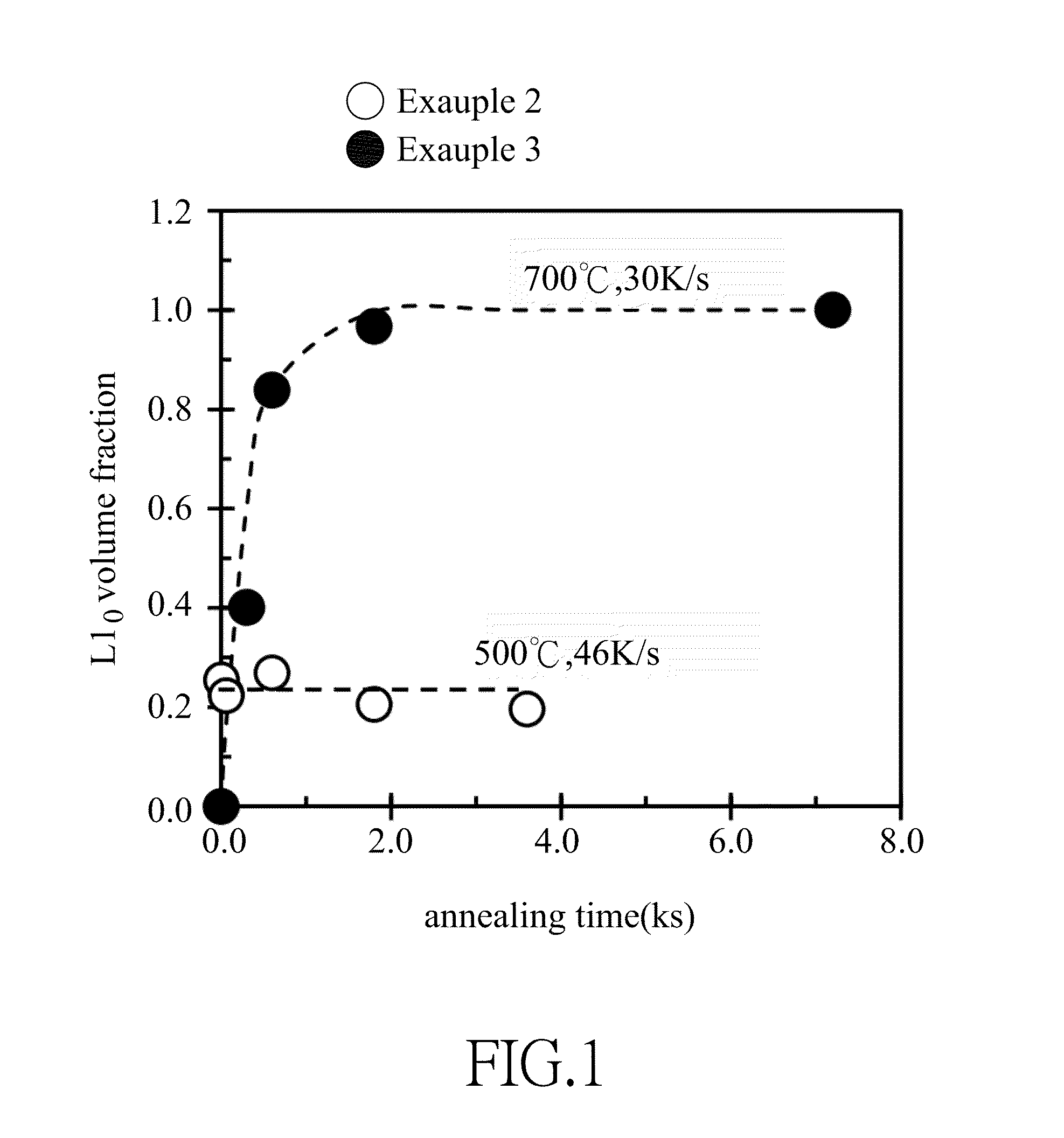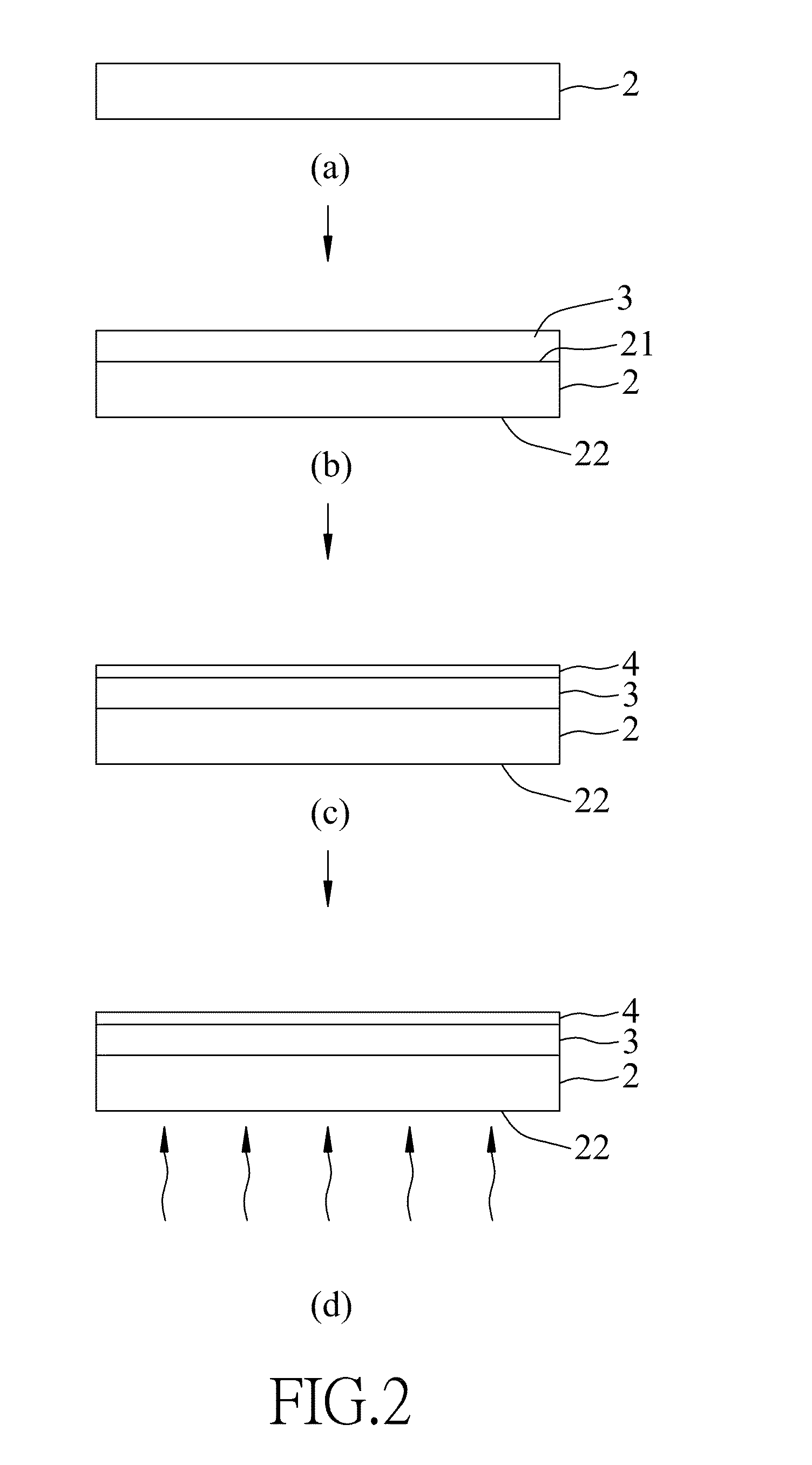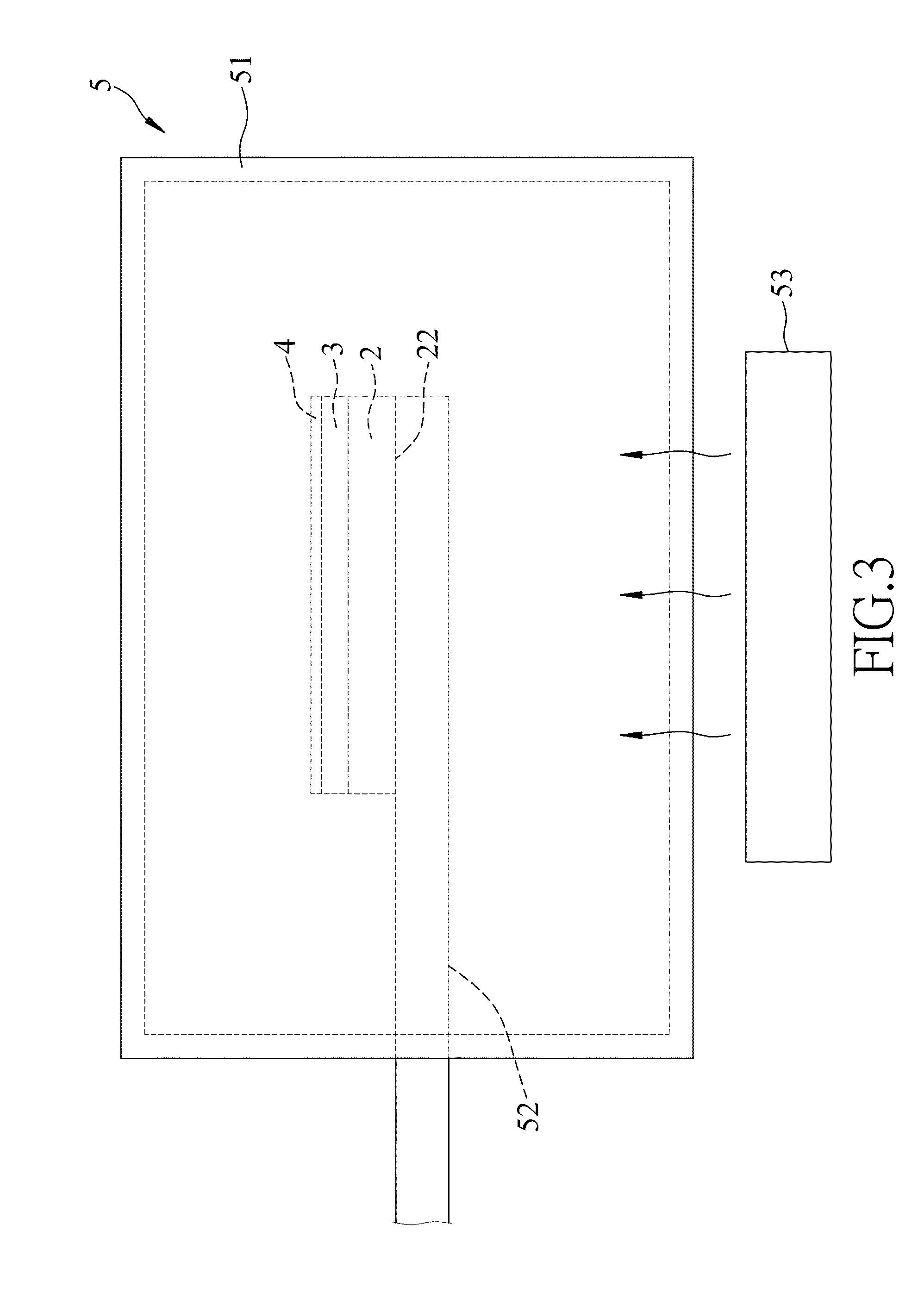Method for making an ordered magnetic alloy
- Summary
- Abstract
- Description
- Claims
- Application Information
AI Technical Summary
Benefits of technology
Problems solved by technology
Method used
Image
Examples
example 1 (
E1)
[0041]A silicon substrate having a thickness of 450 μm was provided as the thermally conductive base 2. A 30 nm SiO2 layer was deposited on the silicon substrate as the thermal barrier layer 3 by sputtering techniques. A total thickness of 5 nm of a FePt alloy layer (including a sub-layer of Fe and a sub-layer of Pt) was deposited on the SiO2 layer as the disordered magnetic alloy layer 4 by co-sputtering techniques (or planetary sputtering techniques) so as to form a stack of the thermally conductive base 2, the thermal barrier layer 3 and the disordered magnetic alloy layer 4. The stack was placed on a quartz stage 52 in the vacuum quartz tube 51 of the heating system 5 (see FIG. 3) which was operated under a pressure of 1×10−5 torr. The second surface 22 of the thermally conductive base 2 was directly irradiated by a light having a wavelength ranging from 400 nm-1100 nm and generated from the near-infrared light source 53, such that the thermally conductive base 2 was heated f...
examples 2 to 4 (
EX2 to EX4)
[0042]The conditions of preparing the ordered magnetic alloy (ordered FePt alloy) of each of Examples 2 to 4 (EX2 to EX4) of the present invention were similar to those of Example 1 (E1), except that the heating rates of EX2 to EX4 were 20, 25, and 40° C. / sec, respectively.
[0043]FIG. 4 shows the XRD patterns of the ordered FePt alloys of EX3 and EX4, each having diffraction peaks of [001] orientation and [002] orientation of L10-FePt.
[0044]Referring to FIG. 5, the volume fractions of L10 domains of the ordered FePt alloys of EX1 to Ex4 are respectively 0.66, 0.79, 0.88 and 0.9.
[0045]FIGS. 6(a) and 6(b) show the hysteresis loops of the out-of-plane coercivity (Hc⊥) and the in-plane coercive field (Hc / / ) for the ordered FePt alloys of EX3 and EX4, respectively. A comparison in the out-of-plane coercivity (Hc⊥) between Ex3 and Ex4 shows that the out-of-plane coercivity (Hc) is increased by increasing the heating rate. As shown in FIG. 6(b), the shape of the in-plane coercive...
examples 5 to 8 (
EX5 to EX8)
[0046]The conditions of preparing the stacks of Examples 5 to 8 (EX5 to EX8) of the present invention were similar to those of EX4, except that the thicknesses of the thermal barrier layers 3 of EX5 to EX8 were 10, 60, 100, and 200 nm, respectively.
[0047]As shown in FIG. 8 and Table 2, the volume fraction of L10 domains of the ordered FePt alloy is increased from 0.885 (EX5) to 0.960 (EX8) by increasing the thickness of the thermal barrier layer 3 (SiO2) from 10 nm to 200 nm.
TABLE 2ThicknessThermallyThermalDisorderedTransient heatVolumeconductivebarrier layermagneticRatefraction ofHc—Hc / / EXbase Si(μm)SiO2(nm)alloy layera° C. / sTa ° C.L10 domainskOekOe5450.010FePt404000.8856.31.04450.030FePt404000.9008.60.66450.060FePt404000.91010.10.67450.0100FePt404000.93013.60.68450.0200FePt404000.96019.00.5aChemical compositions of the disordered FePt alloy of each Example is Fe55Pt45 (determined by inductively coupled plasma-mass spectrometry).
[0048]As shown in FIG. 9, the ratio of the...
PUM
| Property | Measurement | Unit |
|---|---|---|
| Length | aaaaa | aaaaa |
| Thickness | aaaaa | aaaaa |
| Thickness | aaaaa | aaaaa |
Abstract
Description
Claims
Application Information
 Login to View More
Login to View More - R&D
- Intellectual Property
- Life Sciences
- Materials
- Tech Scout
- Unparalleled Data Quality
- Higher Quality Content
- 60% Fewer Hallucinations
Browse by: Latest US Patents, China's latest patents, Technical Efficacy Thesaurus, Application Domain, Technology Topic, Popular Technical Reports.
© 2025 PatSnap. All rights reserved.Legal|Privacy policy|Modern Slavery Act Transparency Statement|Sitemap|About US| Contact US: help@patsnap.com



